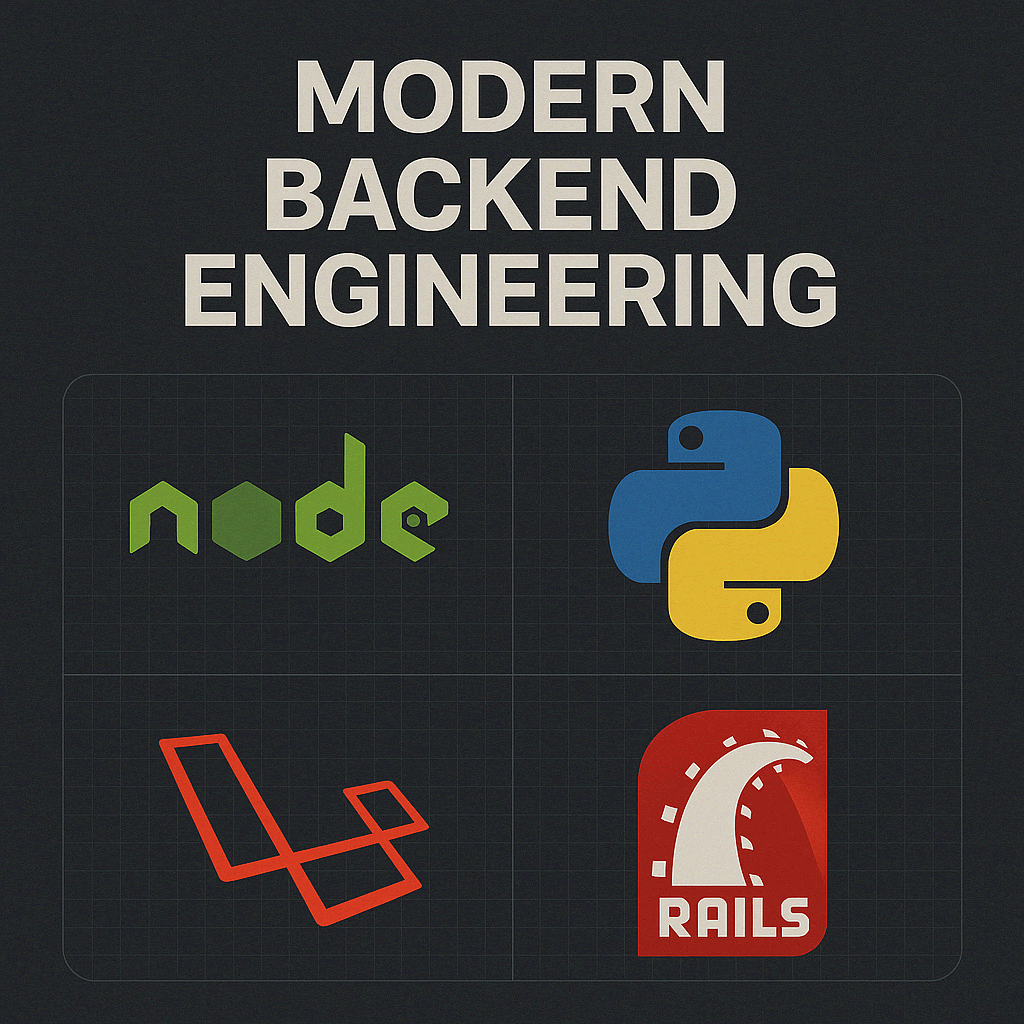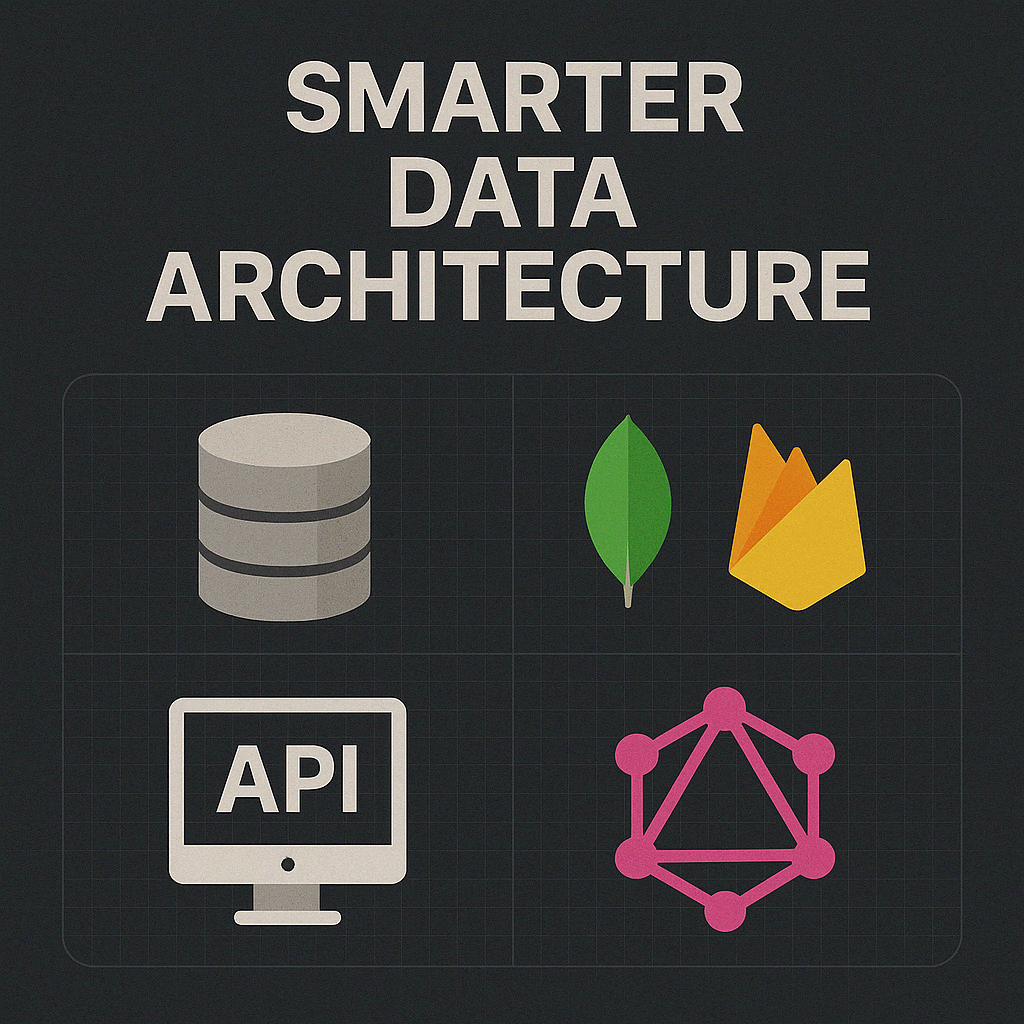
Node.js for Real-Time Systems
We specialize in event-driven applications that handle high loads effortlessly. From chat platforms to live dashboards, we build microservices with Express and Nest.js that scale horizontally and deliver instant user feedback.
Python with Django for Enterprise Web
We use Python to power secure, scalable systems where advanced data handling and machine learning come into play. Django allows us to develop robust platforms with clean architecture and fast iteration.
PHP with Laravel for eCommerce
Our Laravel solutions bring elegance and structure to content-rich and transactional websites. With Blade templates and an intuitive MVC structure, we deliver fast-loading, SEO-optimized experiences ready for global reach.
Ruby on Rails for MVPs and Launch Acceleration
Rails allows us to move fast without sacrificing maintainability. Perfect for startups and innovation labs, we use Rails to bring your product to market in record time with a clean codebase that scales.

Relational Databases
We deploy MySQL and PostgreSQL for transactional integrity and analytics. Our focus on read-replication, indexing, and query tuning ensures these databases perform reliably at scale.
NoSQL and Real-Time Platforms
MongoDB gives us flexible data structures. Firebase lets us build collaborative, real-time user experiences. When needed, we combine both into hybrid models that support the demands of modern applications.
RESTful API Design
Our REST APIs are clean, versioned, and secure. We implement JWT and OAuth2 standards, use Swagger for documentation, and build interfaces that external teams love to use.
GraphQL for Complex Data Models
For apps that require flexible queries and minimal over fetching, we use GraphQL with Apollo or Relay. We manage schema complexity, analyze query performance, and ensure smooth developer experiences.
Talking about “AI technologies” today is like opening a warehouse full of mislabeled boxes. The term is used to describe everything from language models and image generators to recommendation engines and fraud detection algorithms. In truth these are very different techniques thrown under the same umbrella for convenience and marketing. What unites them is not some universal intelligence but a reliance on statistical pattern recognition, data processing at scale, and relentless branding that frames automation as magic. The most visible branch is generative AI, the kind that writes text, produces images, or fabricates audio. These systems have captured attention because they simulate creativity, even though what they really do is remix enormous datasets into plausible outputs. Beneath the spectacle they are still correlation machines, engines of prediction rather than imagination. Their power lies in scale, not in understanding, and the limits show every time they hallucinate facts or produce polished nonsense with perfect confidence.
We create technology foundations designed for long-term growth, enterprise grade reliability, and performance. Whether you are launching a startup, scaling a platform, or modernizing legacy systems, our full-stack architecture ensures every layer is tuned for security, speed, and flexibility.
Machine learning more broadly covers the less glamorous but more widely adopted AI tools. Recommendation algorithms on streaming services, spam filters in email, credit scoring in finance, predictive maintenance in factories these all fall under AI even if no one markets them with neon buzzwords. They are mathematical models that learn patterns from data and apply those patterns to new situations. The success or failure of such systems depends less on abstract brilliance and more on the quality and bias of the data fed into them. Another dimension is computer vision, the branch that allows machines to interpret images and video. Here too the story is one of statistical pattern recognition disguised as perception. Face recognition at airports, medical imaging analysis in hospitals, and surveillance systems in cities all use this technology. The selling point is efficiency, but the risk is overreach. When the machine confuses one face for another or mislabels a tumor, the human cost is immediate, while accountability remains fuzzy.
Natural language processing, which powers chatbots and voice assistants, illustrates the contradiction of AI most clearly. Systems trained on massive text corpora can mimic fluency so convincingly that users mistake it for understanding. Yet the gaps reveal themselves in context, consistency, and reasoning. The technology is a mirror, reflecting patterns of human language without the capacity to ground them in reality. Calling it intelligence is a stretch, though it is convenient for vendors to do so. So when people talk about “AI technologies” they are not pointing to a unified field but to a loose collection of methods, each with strengths, blind spots, and consequences. The label is a marketing shortcut more than a scientific category. It makes the tools sound coherent, futuristic, and inevitable, when in fact they are uneven, experimental, and dependent on human oversight. The more one strips away the branding, the clearer it becomes that AI is not one technology but a cluster of techniques whose value lies less in the mystique and more in their careful, pragmatic application.


